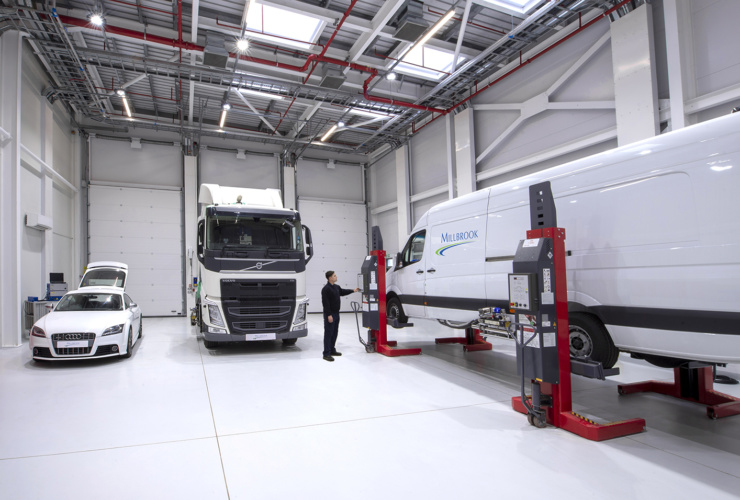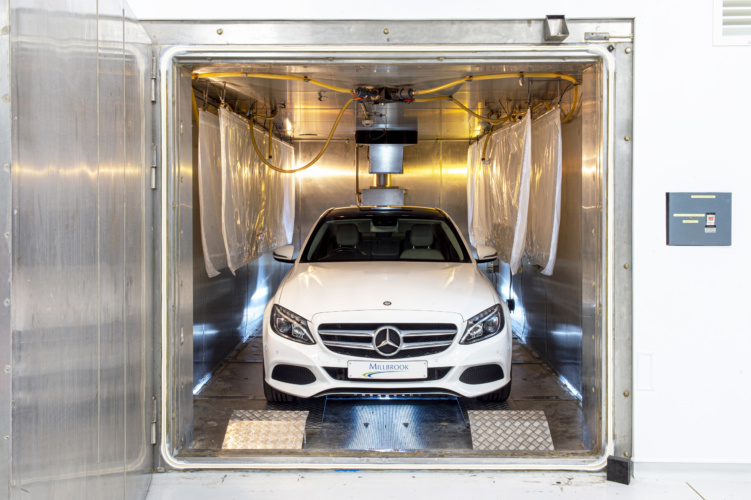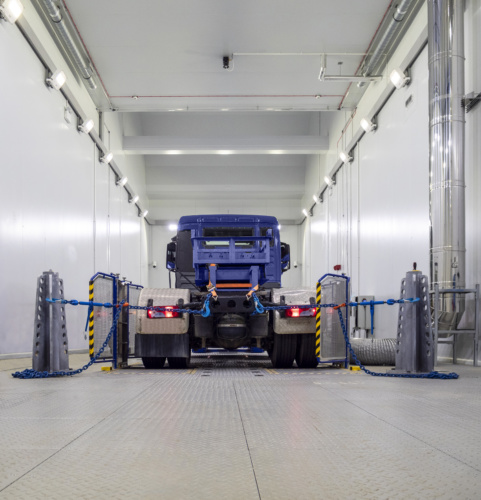The past 12 months have been pivotal in the automotive and transport industries’ journey towards a cleaner, greener future. The COVID-19 pandemic brought emissions into sharp focus, as drastic improvements in air quality during lockdown demonstrated the impact that lower tailpipe emissions can have on the environment.
Then, in November 2020, the UK Government announced that the sale of petrol and diesel vehicles would be banned from 2030, bringing the original deadline forward another five years. If timescales for full electrification were thought to be tight before, this announcement was a clear statement of intent that the evolution needs to happen as soon as possible.
In the commercial vehicle sector, too, truck and bus manufacturers have come under mounting regulatory pressure to pursue a greener agenda and develop vehicles that are suitable for use within Ultra-Low Emission Zones.

Unsurprisingly, there has been a recent increase in new EV sales, with the SMMT’s January 2021 figures showing another significant rise in BEV and PHEV sales. This is in stark comparison to the declining numbers of new petrol and diesel registrations over the same period.
Perhaps one of the contributing factors to the rising demand for EVs is the start of the development of the much-needed upgrades to the national charging infrastructure. The proliferation of rapid and ultra-fast charging has certainly gone some way to allay range anxiety and concerns over charging time, presenting EVs as a more practical option for many drivers.
With all of these factors combining, the pressure is on for manufacturers and engineers in the automotive and transport sectors to work harder than ever before to develop cleaner technologies.
Manufacturers need to determine the best ways to develop lower-emission products, whether that’s through the use of fuel additives, the latest in engine and powertrain technologies, or even testing for particles emitted by vehicle braking. They also need to ensure that their products comply with emissions regulations, including WLTP, RDE, NEDC and China’s 5, 6a and 6b automotive emissions standards.
More from The Engineer
Interview: Millbrook's John Proctor
Comment: Addressing te challenges of future automotive testing
From a testing and validation perspective, this requires innovation from specialist providers such as UTAC CERAM Millbrook when it comes to designing programmes to measure and assess the impact of customers’ products on air pollution and fuel economy and give those customers the information they need to optimise their products. Because of the tight timeframes and stringent legislation that the industry is now working to, it is vital that we shorten test and development programmes to expedite development. By enabling access to a full range of independent test facilities and expertise, UTAC CERAM Millbrook is at the forefront of supporting companies in this endeavour.
So, what are the different types of emissions testing that engineers ought to be thinking about?
Real Driving Emissions (RDE) and Portable Emissions Measuring Systems (PEMS)
Ever since 2015 and the revelations of ‘Dieselgate’, it has become essential that manufacturers carry out accurate and repeatable RDE testing for R&D, regulatory preparation and benchmarking purposes. The latest emissions regulations use RDE testing to assess a vehicle’s performance against emission standards, over a wide variety of boundary conditions, and to help detect the presence of prohibited so-called 'cheat devices'.
UTAC CERAM Millbrook has developed several RDE-compliant PEMS test routes on public roads, and importantly for development and diagnostics testing, on its safe, secure and repeatable test tracks. RDE routes can be replayed in chassis dyno facilities to support calibration development.
Vehicle emissions certification testing
At the end of development programmes and before an operating license is issued, new vehicles must be tested and certified. As mentioned above, emissions regulations have become significantly more challenging in recent years, with the introduction of the WLTC process and RDE.

For instance, UTAC CERAM Millbrook offers climatic emissions chassis dynamometers for certification testing. This covers all the latest European and most of the Chinese emission certification tests and its facilities meet a range of regulatory requirements (see below), providing customers with the confidence that the facilities used for development are the same as they will use for certification. Stringent remote witnessing has continued throughout the recent pandemic allowing customers to continue to certify their new products ready for market release.
Evaporative emissions testing
Another area of emissions testing manufacturers must consider is evaporative emissions (hydrocarbon permeation) testing of vehicles and sub systems for development and homologation, in addition to tailpipe emissions testing.
Fuel vapours are composed of hydrocarbons, which are regulated on gasoline vehicles in most countries. An evaporative emissions test facility is designed and calibrated to control the temperature and pressure within the chamber, then follow the regulated hot soak tests and the regulated diurnal emissions tests. During these tests, the amount of hydrocarbons emitted by the vehicle is measured and compared to standards.
New developments in the truck and bus sectors
The challenges faced by heavy-duty vehicle powertrain engineers today are very different to those of even five years ago. Modern regulations require OEMs to perform a wide range of climatic powertrain and HVAC tests and to simulate more accurate drive cycles at extremes of temperature.
Cutting-edge facilities such as UTAC CERAM Millbrook’s all-new Variable Temperature Emissions Chamber (VTEC) give developers the ability to carry out a variety of tests, including RDE simulation, calibration, development and diagnostics testing. The facility has a dedicated particulate matter filter-weighing chamber. Its emissions system includes a carousel mechanism, which will allow the running of tests with multiple phases and with no limit on cycle duration.

In addition to the comprehensive testing of vehicles with internal combustion engines, VTEC can more accurately prove performance of electric and alternative fuel powered commercial vehicles, including those using hydrogen. This is especially important in light of the increasing need within the sector to develop vehicles that are suitable for use within Ultra-Low Emission Zones.
Emissions testing has never been so integral to the overall vehicle development cycle. With mounting political, regulatory and social pressure on OEMs to expedite the journey towards electrification, the time is now for manufacturers and their engineers to get fully up to speed on the variety of emissions tests for the next generation of vehicles.
All images courtesy of UTAC CERAM Millbrook










Comment: The UK is closer to deindustrialisation than reindustrialisation
"..have been years in the making" and are embedded in the actors - thus making it difficult for UK industry to move on and develop and apply...